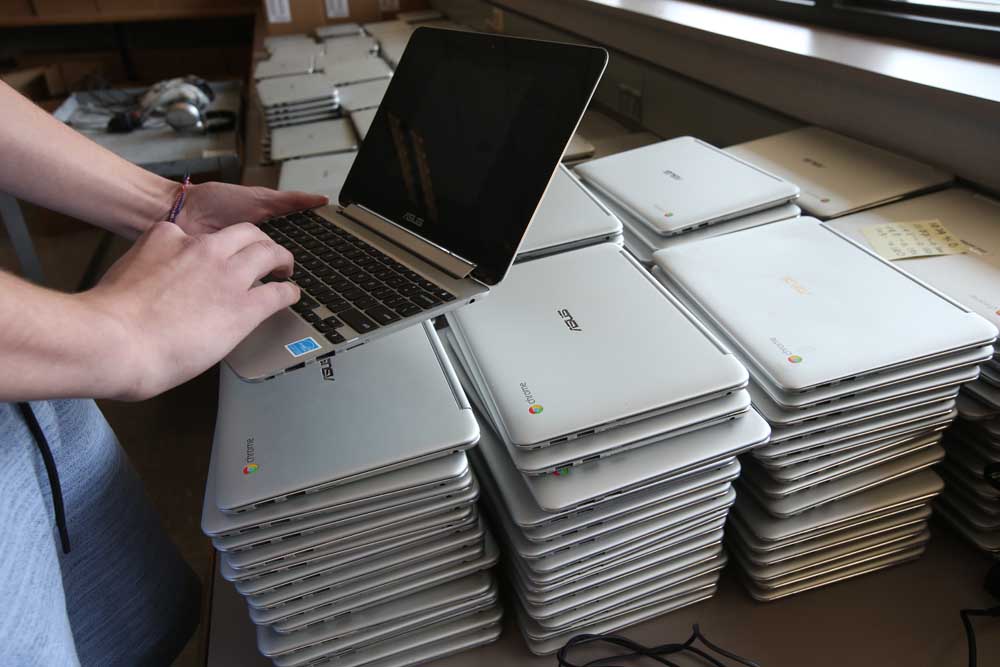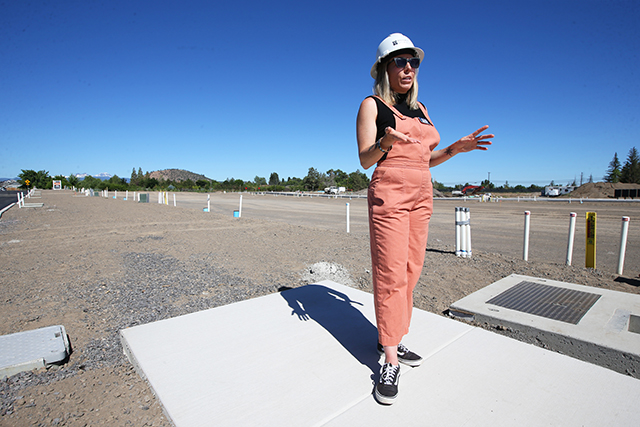Redmond schools waiting on internet hotspots for at least 400 families without internet
Published 2:20 pm Wednesday, April 22, 2020

- Google said it would extend the lifespan of Chromebooks, saving school districts millions of dollars.
There are at least 400 households in the Redmond School District who don’t have access to the internet, but even though Redmond schools have moved to online learning because of the COVID-19 pandemic, those students won’t have the equipment they need to access learning materials until the week of May 4 at the earliest.
In early April, the school district ordered 500 internet hotspots from T-Mobile. But those devices won’t be shipped to Redmond until the week of May 4, according to school district spokesperson Kelly Jenkins. Families without internet access are still waiting on the school district to provide learning materials that don’t require an internet connection.
Trending
“The demand for hotspots right now is astronomical, so everyone’s at the mercy (of telecom providers),” said Mike Nye, the assistant director of instructional technology for Redmond School District. “When we get them, we’ll deploy them as quickly as we can.”
Redmond School District’s distance learning plan revolves around the district’s EngageRedmond website, which was created in mid-March and originally only offered supplemental educational materials.
In April, after the Oregon Department of Education required school districts to provide more than bare bones learning materials, the Redmond School District greatly expanded EngageRedmond. All K-12 teachers have their own webpages, where students and families can view daily learning plans and materials. Some teachers have even filmed videos for their students and posted them to the website.
But for families in Redmond, Terrebonne and Tumalo who don’t have internet access and are still waiting for hotspots, EngageRedmond is still not accessible. While the wait continues, teachers and school district staff are creating a plan to provide analog educational materials to those families.
“It’s not just a plan for how to provide paper packets for families,” said Linda Seeberg, Redmond School District’s executive director of academic achievement. “It’s also about how to distribute those considering the safety of families and staff.”
In the meantime, teachers and school district staff are frequently calling families without internet access to see how Redmond School District can best serve them, said Superintendent Mike McIntosh.
Trending
Even families who are plugged in to EngageRedmond are still connecting with teachers at least once a week, Seeberg said.
“(Communication with families) centers itself in two places: care and connection, that human part of the work,” she said. “The other is checking in on how they’re accessing learning plans, and what barriers we can address for them to improve the quality of their learning experience.”
Bend-La Pine Schools — the only Central Oregon school district larger than Redmond — ordered 1,000 hotspots from T-Mobile in March. The district also had to wait a while, but 500 hotspots arrived Monday evening, said Skip Offenhauser, Bend-La Pine’s director of technology and curriculum. The district doesn’t know exactly how many students live in households without internet access, but they’ve already sent 110 hotspots to schools to be delivered to families, Offenhauser said.
For both school districts, T-Mobile didn’t require an upfront fee for the hotspots. But once the devices are up and running, they’ll cost Bend-La Pine and Redmond $20 per month for each device.
That means when hotspots finally arrive and are being used by Redmond families, the district will spend about $10,000 monthly to keep them working. That cost could quickly dwarf the district’s typical budgeted internet cost, which usually comes out to $40,000 per year, McIntosh said.
At Bend-La Pine, the district is paying $5,000 per month for the hotspots’ internet for now, because it has only activated 250 devices so far, according to Ben Hansen, the school district’s information technology director.
Redmond and Bend-La Pine aren’t the only school districts depending on T-Mobile for hotspots.
T-Mobile and Sprint, which recently merged, have already sent hotspots to 820 schools and school districts across the U.S., company spokesperson Joel Rushing wrote in an email. The telecom giant is trying to meet an unprecedented demand for the devices, he wrote.
Despite waiting for internet hotspots, Redmond school staff still handed out more than 1,800 Chromebook laptops to students in the past couple weeks, said Nye, the district’s assistant director of tech. Although students at Redmond and Ridgeview high schools already had take-home laptops, middle school and elementary students needed to be given devices, he said.
“It’s been a lot of fun, actually, handing out the devices,” Nye said. “It’s been a lot of smiles, relieved parents and happy students.”








